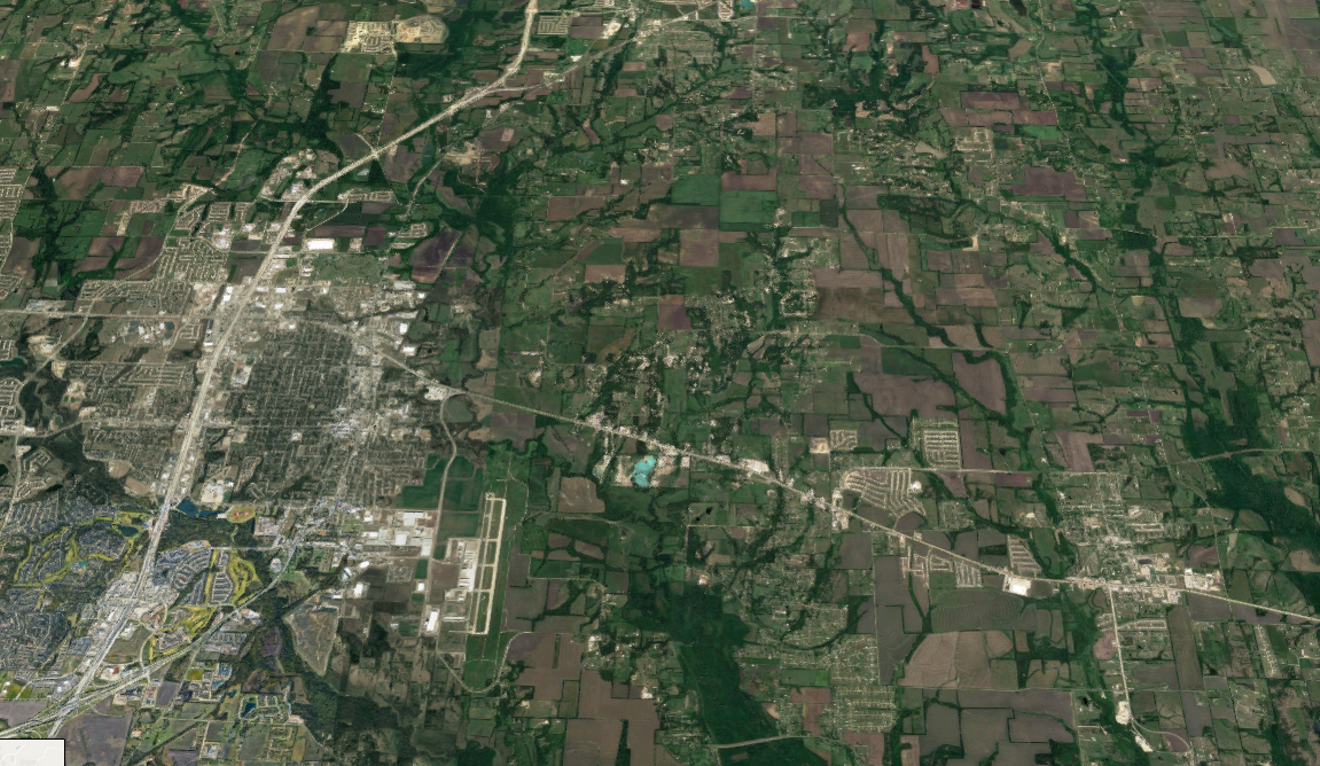Sanderson has been traveling to cities like New Hope and municipal districts to sell them on joining a partnership to hire eight additional officers to bring the response times down. Sanderson gives his presentation to fewer than a dozen New Hope residents, some of whom question if they can afford the partnership, which entails a four-year contract with the Sheriff’s Office with annual costs of $41,700.
The new hires will provide backup for deputies during peak call times, one way the Sheriff's Department is trying to handle the worsening traffic. “All of us who travel in Collin County know that Highway 380 and Interstate 75 have become a barrier for us,” says Sanderson. “You can’t do that anymore because of the traffic. It’s impossible to get down there and be helpful.”
The problem has actually grown steadily, as Collin County deputy response times throughout the county has been increasing since 2012. The driving factor seems to be the number of homes popping up in municipal
districts appearing in the unincorporated areas of the county. “We’ve got 1600 homes out here [in one municipal district],” Sanderson says. “An urban environment out in the county. It was a field two years ago.”
Sanderson told the Observer that they are not the only county in North Texas dealing with this problem. “Some of the counties in the state, demographically, are experiencing it at a quicker rate than others,” he says. “And we’re one of them. Denton County is a little bit behind us. But we’re like brother and sister.”One traffic accident tied up three deputies from three county districts in the county, leaving two of those districts unprotected for four hours.
tweet this
Sanderson says they’re going to all the incorporated cities like Blue Ridge, Wylie and St. Paul and asking for them to partner with the sheriff’s office and continue the relationship. They call it a “stop gap” plan because it fills their current staffing needs — to offer two deputies in each district — and gives the sheriff the leverage he needs when he goes to county commissioners later this year to ask for more money.
To meet the increased demand for services and cut back on the response time, Sanderson says they’re also pulling their three school resource officers and putting them back on the streets. “That will give us enough manpower for four years until the sheriff can put his plan into place to get more officers,” he says.
Newly elected Sheriff Jim Skinner’s plan for more officers comes as Collin County’s public safety budget continues to fluctuate. In 2015, the budget was $67.2 million, dropped to $65.2 million in 2016 and rose to $69.8 million for 2017.
At the meeting, the chief deputy gives examples about the difficulties the Collin County Sheriff’s Office faces to respond to calls for emergency in a county whose population increases every time Sanderson looks at the projections. One example involves a terrible traffic accident on Highway 380 a few days ago. He claims the incident tied up three deputies from three districts in the county, leaving two of those districts unprotected for four hours.
“It’s just with more than 900,000 people in the county now collectively, it’s just becoming a problem to navigate around the county,” he says. “Like I said, it’s become an officer safety issue.”
New Hope Mayor Jess Herbst asks the question that many residents have been proposing since they received word of the sheriff’s staffing struggles at the last city council meeting in early March. “Why are we paying? Why is the county not providing?”
Sanderson struggles to answer the question at first. “Well, the primary responsibility of the sheriff’s office is to respond to service in the unincorporated part of the county what little is left. But we have, for years, responded as a complete sheriff’s office to incorporated areas of the county like Blue Ridge, Valley Crossing, New Hope and Lucas.”
Lucas has been contracting for police services from the sheriff’s office since 2006, he says, but the sheriff has recently asked the small city to pay more for those services.
Sanderson also reminds the small crowd that the sheriff’s office doesn’t just offer patrol but also access to the criminal investigation and narcotics division.
“So what I’m hearing you saying is the county is providing police services to New Hope and other incorporated towns who do not have their own police force,” Herbst says. “And you’ve been handling us as a [complimentary service].”
One New Hope resident asks how much of her county taxes goes to fund the sheriff’s office, but no one on council was able to answer her question.
“At some point, the service is going to be so high that we’re not going to be able to answer them all.”
tweet this
Mayor Herbst, however, did remind residents that they incorporated as a town to avoid paying McKinney’s high taxes and, like the county, their tax rate has been decreasing each year. She indicates some kind of sacrifice would need to be made because the city can’t afford to buy a $55,000 police car that needs replacing every two years and pay police officers between $40,000 and $60,000 annually.
She compares what the sheriff’s office is having to do with what the county had to do when it required developers to meet a certain road standard before they built a residential neighborhood. She says she hopes the county will address the population issue by passing an ordinance that would keep developers like Centurion American from dropping 1,600 people into an unincorporated area without chipping in, too.
“Nobody is holding our feet to the fire,” she says. “But it’s getting to the point where we won’t have service at all and will need to provide our own police force. We just can’t buy an officer and a car for $41,700.”
Sanderson reinforces her argument with his own. “At some point, the service is going to be so high that we’re not going to be able to answer them all,” he says. “Then we’ll end up being like some of the municipalities down in the Metroplex like Dallas where they just go call to call all night long. And that’s all they do.”













